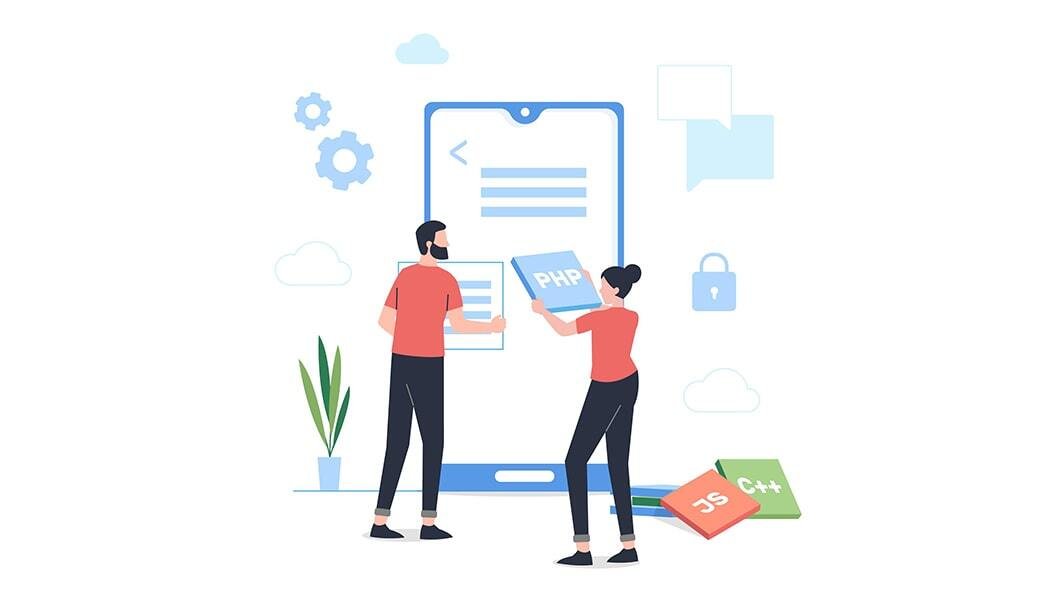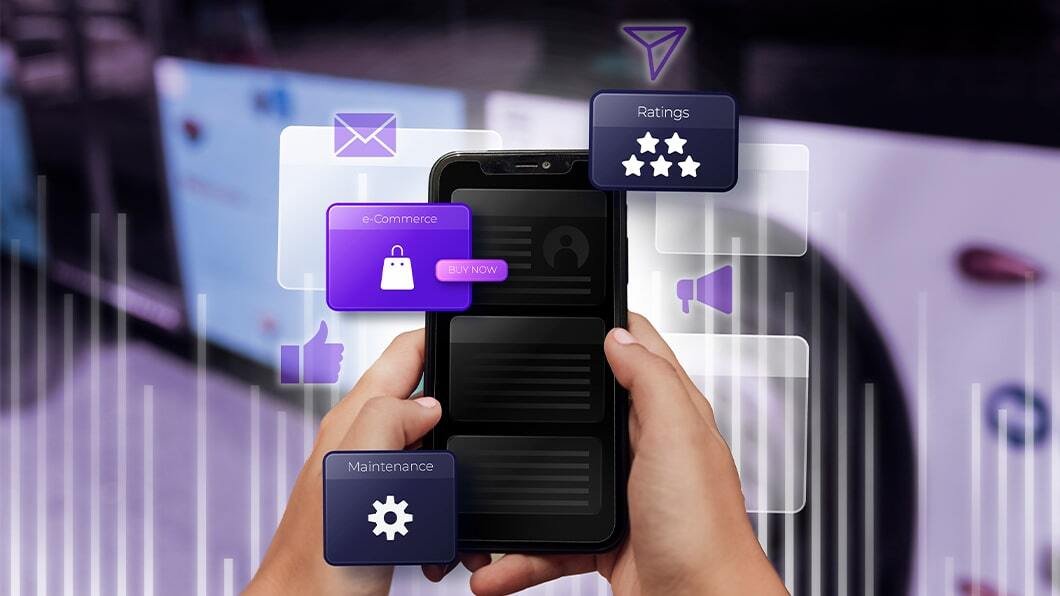
Mobile App Development Trends and Best Practices: Building for the Future
Introduction
Mobile app development has come a long way in recent years, shaping the digital landscape and revolutionizing the way we interact with technology. As mobile devices become an integral part of our daily lives, staying up-to-date with the latest trends and best practices is crucial for developers and businesses alike. In this blog, we will explore the current mobile app development trends and delve into the best practices that can help create successful and user-friendly applications.

- Progressive Web Apps (PWAs): Progressive Web Apps have gained significant momentum in recent years. PWAs combine the best of web and mobile app experiences, allowing users to access app-like features directly through their web browsers. PWAs provide an enhanced user experience, with faster load times, offline capabilities, and push notifications. By leveraging service workers and modern web technologies, developers can create cross-platform applications that work seamlessly across different devices.
- Artificial Intelligence and Machine Learning: Artificial intelligence (AI) and machine learning (ML) have become game-changers in mobile app development. Integrating AI and ML technologies can enhance app functionalities, personalize user experiences, and automate various tasks. From voice assistants and chatbots to image recognition and predictive analytics, incorporating AI and ML into mobile apps opens up a world of possibilities for developers and provides users with more intelligent and intuitive interactions.
- Internet of Things (IoT) Integration: With the rise of smart devices, the Internet of Things has expanded rapidly. Integrating mobile apps with IoT devices can create a connected ecosystem that enhances user convenience and control. Mobile apps can serve as a centralized hub, allowing users to monitor and control various IoT devices from their smartphones. Whether it’s managing home automation systems, tracking health and fitness data, or controlling smart appliances, IoT integration offers a seamless user experience and unlocks new opportunities for innovation.
- Augmented Reality (AR) and Virtual Reality (VR): AR and VR technologies have transformed the way we perceive and interact with digital content. Mobile apps can leverage AR and VR to provide immersive experiences, whether it’s for gaming, education, shopping, or real estate. From overlaying virtual objects onto the real world to creating entirely immersive environments, AR and VR enhance user engagement and create unique experiences that captivate audiences.
Best Practices for Mobile App Development:

- User-Centric Design: Prioritize user experience (UX) and user interface (UI) design throughout the development process. Conduct user research, create intuitive navigation flows, and design visually appealing interfaces that align with your target audience’s preferences and behaviors. Regularly test the app’s usability and gather feedback to refine and improve the user experience.
- Cross-Platform Development: Consider developing apps that work across multiple platforms to reach a broader user base. Frameworks like React Native, Flutter, and Xamarin enable developers to write code once and deploy it on both iOS and Android platforms, reducing development time and cost.
- Performance Optimization: Optimize app performance by minimizing loading times, reducing app size, and implementing efficient caching strategies. Pay attention to battery consumption, memory management, and network usage to ensure a smooth and responsive app experience.
- Security and Privacy: Mobile app security is of utmost importance to protect user data and build trust. Implement secure data transmission, encryption protocols, and authentication mechanisms. Regularly update the app to patch security vulnerabilities and comply with privacy regulations, such as GDPR or CCPA.
- Continuous Testing and Deployment: Adopt an agile development approach with continuous integration and continuous deployment (CI/CD) practices. Automate testing processes to catch bugs and issues early on, ensuring a stable and reliable app. Regularly release updates to address user feedback, fix bugs, and introduce new features. development, keeping up with the latest trends and following best practices is essential for creating successful and user-friendly applications. By incorporating progressive web apps, artificial intelligence and machine learning, Internet of Things integration, and augmented reality and virtual reality experiences, developers can deliver innovative and engaging mobile apps.
- Scalability and Performance: Design your app with scalability in mind, anticipating future growth and increasing user demands. Optimize the app’s performance by minimizing resource usage, optimizing algorithms, and leveraging caching and content delivery networks (CDNs). Conduct thorough load testing to ensure your app can handle increased user traffic without performance degradation.
- Seamless Onboarding and User Guidance: Create an intuitive onboarding process that guides users through the app’s features and functionalities. Provide tooltips, interactive tutorials, or contextual help to assist users in understanding how to navigate and utilize the app effectively. A seamless onboarding experience increases user engagement and reduces the learning curve.
- Analytics and User Feedback: Integrate analytics tools into your app to gather valuable insights about user behavior, usage patterns, and performance metrics. Analyzing this data can help you make data-driven decisions to improve the app’s features, user experience, and overall performance. Additionally, encourage user feedback and reviews to understand user preferences and address any issues promptly.
- Offline Functionality: Consider integrating offline functionality into your app to provide a seamless user experience even when internet connectivity is limited or unavailable. Implement local data storage, offline caching, and synchronization mechanisms to ensure users can continue using essential features and access previously downloaded content offline.
- Regular Updates and Maintenance: Mobile app development is an ongoing process. Continuously update and maintain your app by releasing bug fixes, performance enhancements, and new features. Stay proactive in addressing user feedback and resolving issues promptly to ensure a positive user experience. Regular updates also demonstrate your commitment to providing a high-quality app.
- Accessibility: Design your app with accessibility in mind to ensure inclusivity for users with disabilities. Follow accessibility guidelines and standards, such as WCAG (Web Content Accessibility Guidelines), to make your app accessible to a wider audience. Incorporate features like screen reader compatibility, adjustable font sizes, and color contrast options to accommodate different accessibility needs.
- App Store Optimization (ASO): Optimizing your app’s visibility and discoverability in the app stores is essential for attracting and acquiring users. Conduct thorough keyword research to identify relevant and high-ranking keywords for your app’s description, title, and metadata. Optimize your app’s visuals, including icons, screenshots, and promotional videos, to create a compelling and engaging app store presence.
- Streamlined User Registration: Simplify the user registration process by offering multiple authentication options, such as social media login or email sign-up. Minimize the number of required fields and streamline the registration flow to reduce friction and encourage user adoption. Consider offering guest access or allowing users to explore the app before committing to registration.
- Push Notifications and Personalization: Implement push notifications strategically to engage and re-engage users. Personalize notifications based on user preferences and behaviors to deliver relevant and timely content. Avoid spamming users with excessive notifications, and provide opt-out options to respect their privacy and preferences.
- Test on Different Devices and Platforms: Ensure your app is thoroughly tested on various devices, screen sizes, and operating systems to guarantee a consistent and seamless user experience across different platforms. Emulate real-world scenarios and perform compatibility testing to identify and fix any device-specific issues or inconsistencies.
- Secure Backend and APIs: Pay attention to the security of your app’s backend systems and APIs. Implement secure authentication protocols, such as OAuth or JWT, to protect user data and prevent unauthorized access. Regularly audit and update API endpoints to mitigate potential vulnerabilities.
- Documentation and Support: Provide comprehensive documentation and support resources to assist users in understanding your app’s features and functionalities. Clear and concise documentation, FAQs, and troubleshooting guides can reduce user frustration and improve the overall user experience. Offer multiple channels for user support, such as email, chat, or community forums, to address user queries and issues promptly.
- Social Media Integration: Leverage social media integration to enhance user engagement and enable seamless sharing of app content. Implement social login options and allow users to share achievements, content, or app-related updates on popular social media platforms. This integration can help increase app visibility and attract new users through social referrals.

By incorporating these best practices into your mobile app development process, you can create applications that not only align with the latest trends but also deliver exceptional user experiences, drive user engagement, and achieve long-term success. Remember, the key is to adapt to evolving technologies and user expectations while maintaining a focus on usability, performance, and security.
In conclusion, staying up-to-date with mobile app development trends and following best practices is vital for creating modern, user-friendly, and successful applications. By embracing emerging technologies, prioritizing user-centric design, ensuring performance optimization, focusing on security and privacy, and adopting agile development practices, developers can build mobile apps that stand out in the competitive digital landscape. Embrace the trends, adhere to the best practices, and unleash the full potential of mobile app development.
FAQ’s?
Q: How long does it take to develop a mobile app?
A: The development timeline for a mobile app can vary depending on various factors, including the app’s complexity, desired features, platform (iOS, Android, or both), and the development approach. Simple apps with basic features can take a few weeks to develop, while more complex apps with advanced functionalities may require several months or even longer.
Q: What is the cost of developing a mobile app?
A: The cost of developing a mobile app depends on factors such as the app’s complexity, design requirements, development platform, and the location of the development team. Hiring in-house developers or outsourcing to a development agency also impacts the cost. It is recommended to gather detailed project requirements and consult with app development professionals to receive accurate cost estimates.
Q: How can I monetize my mobile app?
A: There are several monetization strategies for mobile apps, including:
- In-app purchases: Offering additional features, virtual goods, or premium content within the app for a fee.
- Advertising: Integrating ads into your app and earning revenue through impressions or clicks.
- Subscriptions: Providing a subscription model with access to premium content or enhanced features on a recurring basis.
- Sponsorships and partnerships: Collaborating with relevant brands or businesses to promote their products or services within your app.
- Freemium model: Offering a free version of the app with limited features and providing a paid upgrade for accessing the full functionality.
Q: How important is app store optimization (ASO) for my mobile app?
A: App Store Optimization (ASO) plays a crucial role in improving the visibility and discoverability of your app in the app stores. By optimizing your app’s metadata, keywords, visuals, and ratings, you can increase its chances of appearing in relevant search results and attracting more organic downloads. ASO helps drive user acquisition and enhances your app’s overall success.
Q: What security measures should I consider during mobile app development?
A: Security is paramount in mobile app development. Here are some essential security measures to consider:
- Secure data transmission: Use secure communication protocols (HTTPS, SSL/TLS) to encrypt data transmitted between the app and servers.
- Authentication and authorization: Implement robust user authentication mechanisms to ensure only authorized users can access sensitive data or perform specific actions.
- Secure data storage: Safeguard user data by storing it securely on the device or using encrypted databases or file systems.
- Regular security updates: Stay updated with security patches and regularly release updates to address vulnerabilities and protect against emerging threats.
- User privacy: Comply with privacy regulations and handle user data responsibly. Obtain user consent for data collection and clearly communicate your privacy policy.






























